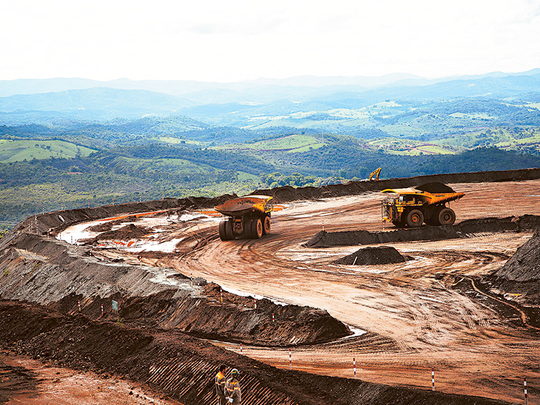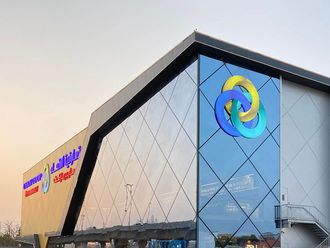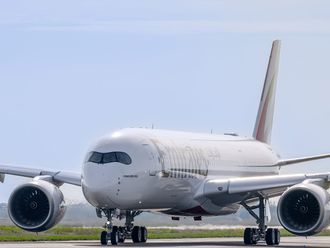
Conceicao Do Mato Dentro, Brazil: A giant truck carries chunks of sparkling mountainside to a web of yellow conveyor belts at a huge mine in eastern Brazil, a few more hundred tonnes of iron ore that are good for its owner Anglo American but bad for a battered global market.
Part of a new generation of massive mines contributing to a supply glut, the Minas-Rio mine has the scale and modern design to produce iron ore, the main ingredient in steel, at well below the costs of more traditional projects. “We’ll be competitive wherever the price is,” Paulo Castellari, the iron ore head for Anglo in Brazil, said.
But only a four-hour drive away, in the sleepy town of Itatiaiucu, workers at older mines are being laid off. Almost everyone in the town of 12,000 people follows the price of iron ore and for the last year they have watched it drop in half to near the lowest level in a decade.
With it, about 20 per cent of mining jobs in the town have been cut, the local union says. “I go to work every day wondering if I’ll be next,” said José Roberto, who has worked for 27 years at a local mine now owned by steelmaker ArcelorMittal, where the union says 30 of about 300 workers have been laid off in recent months.
A spokesperson for Arcelor confirmed nearly 20 people lost their jobs in April due to the ending of a joint venture project. Slower economic growth in China, the world’s biggest market for iron ore, and new production from mines like Minas-Rio, has flipped the global market into oversupply.
While the likes of Rio Tinto, BHP Billiton and Vale SA increase output, higher-cost mines from Australia to Sierra Leone are closing.
Minas Gerais, a state the size of France, has for three centuries been the heart of Brazil’s mining industry, its earth rich in emeralds, gold and other minerals. But now as job losses mount, some areas are losing their primary source of income.
Just outside Itatiaiucu, the mine of MMX Mineração, founded by fallen magnate Eike Batista, has already closed, costing 800 jobs. Another mine, owned by Brazilian steelmaker Usiminas, has laid off about 300 of its 1,300 workers, according to the union. Usiminas would not confirm the number but said it was constantly balancing the size of its workforce with the demands of the market.
Higher costs
Privately-owned Ferrous Resources has cut 350 jobs since January at its mine in the neighbouring town of Brumadinho, according to a union official. It is now run on a skeleton staff of around 90 people and a visit to the gates showed little sign of activity.
Iron ore tends to be a scale game, with larger producers able to afford better infrastructure like rail or slurry pipes which in turn reduce costs. With less efficient infrastructure, smaller mines usually have higher costs and struggle in a price slump.
Calculations by commodities research firm Wood Mackenzie suggest smaller iron ore producers in Minas Gerais have an average cash cost of around $42 per tonne. After adding on $10-15 per tonne to ship it to China, margins are tiny or negative at recent prices of $55-60 per tonne.
It is still too early to tell whether the current fall in price will be the final death knell for these mines and the towns that rely on them. In the cyclical world of commodities, difficult times come with the territory but after the so-called “super-cycle” of the past decade, the slump is likely to be long.
“Our forecast is that the price will stay below $60 (Dh220) per tonne for the next four years,” UBS analyst Andreas Bokkenheuser said.
On the central plaza in Itatiaiucu, men play chess in the afternoon sun by a whitewashed church built after Portuguese gold prospectors founded the town in 1674. The main hotel, which once bustled with contractors, now has a full set of keys above reception.
The local head of a government job agency, Murilo Junior, admits he can no longer find places for everyone coming to him. “We’ve been hit hard by the mining sector,” he said.
Different reality
It is not just job losses hurting the town. Local shops say the number of people coming through their doors has dropped by a third.
And with 70 per cent of local government revenue coming from mining, projects like paving new roads have had to be cut. The city’s mayor, Matarazo José da Silva, fears the town will have to curb investment in health and education that benefited from the boom.
“That could happen in the medium term ... If iron ore remains low, we will face a different reality and have to adapt,” Silva said.
The impact has been felt in less obvious places too. Inhotim, the world’s largest outdoor modern art museum, last year laid off 400 workers, nearly a third of its total. The owner, Bernardo Paz, is a mining magnate who made his money in iron ore.
Companies like Brazilian miner Vale are also scaling back their sponsorship of the museum.
Outside the closed MMX mine, José Santos now works as a security guard overlooking the mine he helped operate for 12 years. “I was one of the lucky ones, I got to stay on after everyone left. But who knows how much longer they’ll need guards here?”












